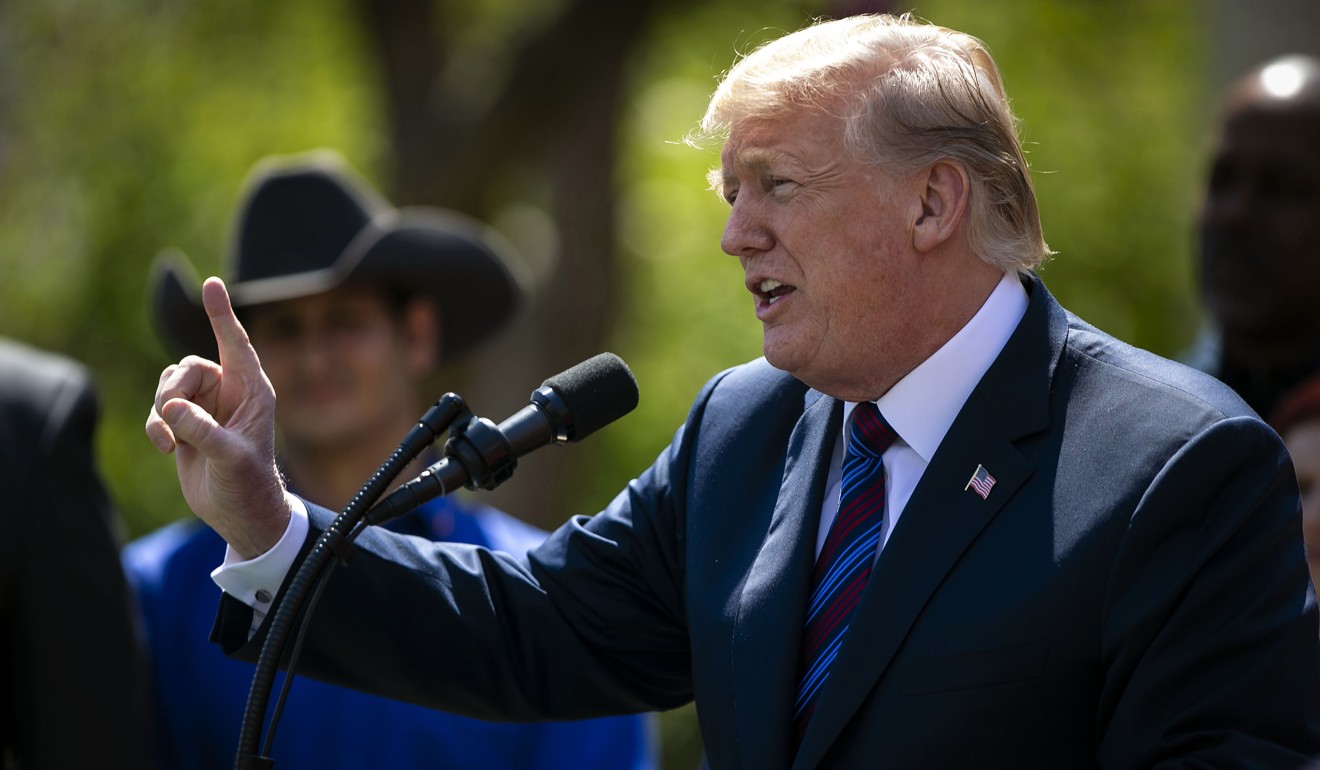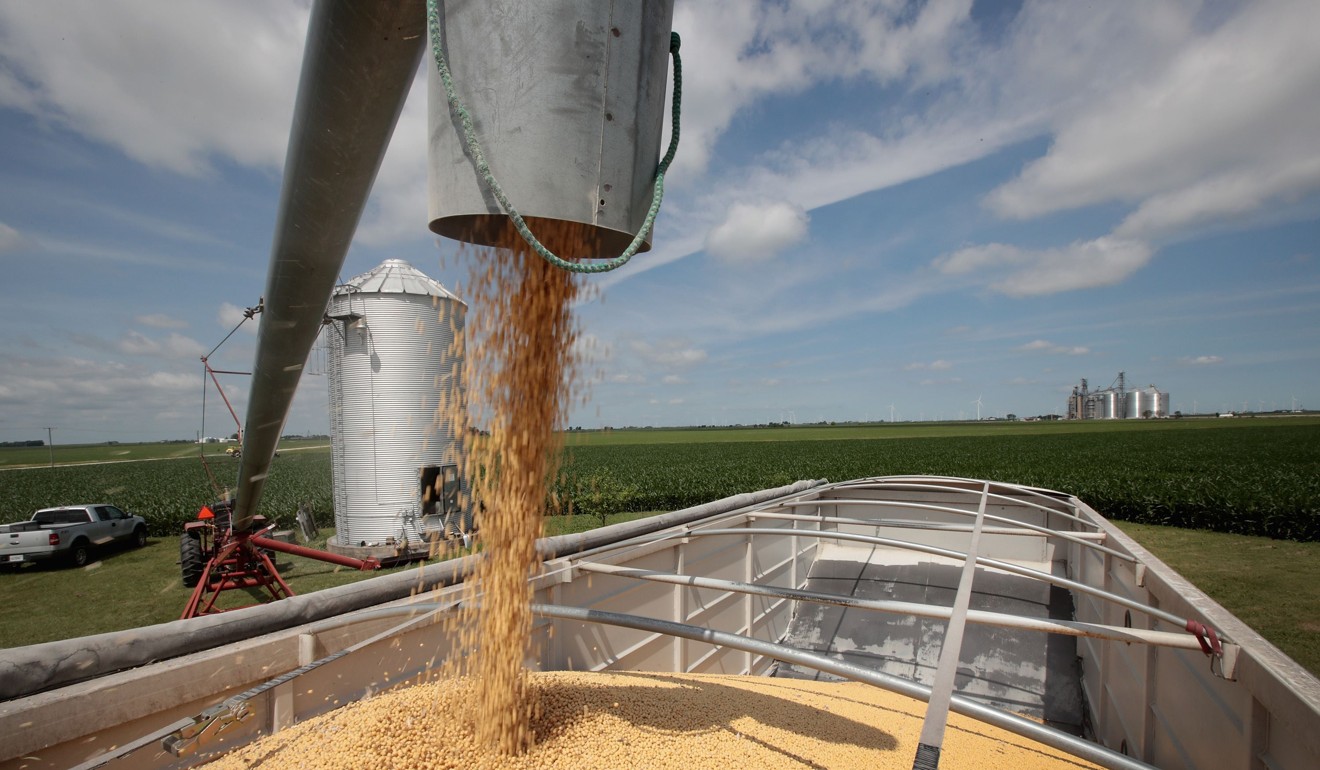
‘If China closes, that’s our largest market’: US businesses grit their teeth as trade war looms
From cherry farms in Washington state to Midwestern chemical plants to New England lobster-trap makers, the risk of a global trade war is creating anxiety among executives
US President Donald Trump says he wants to level the playing field for American companies in the global economy, but his combative stance has unsettled business plans from the Atlantic to the Pacific.
From cherry farms in the state of Washington to Midwestern chemical plants to New England lobster-trap makers, the risk of a global trade war is creating anxiety among executives whose firms rely on foreign markets for revenue or to keep costs down with imported products.
China ‘ready to hit back’ at Donald Trump’s tariffs
On Friday, Trump announced US$50 billion in tariffs on imports from China. Those came on top of levies he had imposed on imported steel and aluminium from the EU and Canada, which provoked anger and frustration that erupted rancorously at a Group of Seven summit last weekend in Quebec.
As Trump disrupts the rules that have governed global trade for decades, the prospect of a stand-off is rippling through American regions, industries and economic sectors, touching every aspect of business.
In Clinton County, New York, a decision 25 years ago to tie its future to its proximity to Montreal paid off. About 15 per cent of its population of 80,000 works for a Canadian or border-related employer, said Garry Douglas, chief executive officer of the North Country Chamber of Commerce in Plattsburgh.
Trump announces tariffs on US$50 billion of Chinese goods
Direct annual economic impact from cross-border commerce amounts to more than US$2 billion a year. Tariffs threaten that.
“Most are hopeful this is all tactical and will eventually be resolved,” Douglas said. “The uncertainty, however, is already having a chilling effect on decisions by companies regarding cross-border investment and deals.”
Similar fears loom in Florida, bound to Latin America and the Panama Canal with 14 deepwater seaports. The Florida Chamber of Commerce estimates that a quarter of the state’s economy depends on trade to some extent.

But in Granite City, Illinois, the sound of blast furnaces roaring back to life is the area’s hope.
US Steel Corp plans to hire about 300 people to restart a second furnace at its plant there to satisfy fresh demand for American-made steel, the company said this month. It resumed operations in March after Trump announced the tariffs based on national security grounds.
Elsewhere in America’s industrial heartland, though, companies are on edge. Many have built supply chains that source parts from all over the world.
China-US trade war is making American soybean farmers anxious
“Uncertainty in terms of trade and global flows like that isn’t good,” said Blake Moret, chairman and chief executive of Rockwell Automation, a producer of industrial systems in Milwaukee, Wisconsin.
Some companies are delaying capital projects. Tariffs are clouding investment decisions and raising construction costs, said A.B. Ghosh, North America president of Akzo Nobel NV’s speciality chemical business.
While the Dutch company will proceed with a US$100 million upgrade of an Illinois plant, “it may stop us from doing other investments”, Ghosh said.

Companies with links to Mexico are particularly worried. Mexico has been hit with steel tariffs, and Trump has threatened to pull out of the North American Free Trade Agreement.
Union Pacific has connections at six border crossings, and 12 per cent of its volume originates or ends in Mexico. The Omaha, Nebraska-based railroad also owns a 26 per cent stake in the Mexican railroad Ferromex.
“The worst fear would be the trade war in general,” said Rob Knight, chief financial officer of Union Pacific. “Does Mexico come up with some other retaliatory action?”
Here are five ways China is winning Trump’s trade war
Growers of apples, pears and cherries in Washington, Oregon and Idaho are rushing to figure out what they can do with perishable fruit that’s now the target of retaliatory tariffs in markets such as China, India and Mexico.
Mark Powers, president of the Northwest Horticultural Council, said its 4,700 growers in those states export about US$1 billion worth of produce each year. Finding new, tariff-free markets requires lengthy negotiations between countries.
“Quantifying the results of this is a guessing game,” he said. “We’re already seeing customers coming back and asking for discounts and offsets.”

Cherries are a pressing concern, particularly because members are enjoying a bountiful crop. The fruit lasts only about seven days once picked, and most exports are shipped in planes to Asia.
“If China closes, that’s our largest cherry market, and it’s hard to divert on the fly,” Powers said.
Jim Knott, chief executive officer of Riverdale Mills in Northbridge, Massachusetts, says his company supplies 85 per cent of the North American market for the wire mesh that covers lobster traps.
G7 trade divisions ‘won’t help China’s negotiations with US’
The price of the steel, much from Canada, has almost doubled since January 1, he said, blaming the tariffs themselves and hoarding after Trump’s announcement.
As much as 45 per cent of what Knott’s company produces is shipped overseas. He says the steel tariff threatens the livelihoods of his 200 employees.
“We work very, very hard to take jobs back from China, and we ship all over the world,” Knott said. “This tariff just puts handcuffs on us.”
But threats can be negotiated. Representative Bill Keating, a Massachusetts Democrat, represents towns that produce most of the state’s cranberries, its largest crop at an annual value of almost US$100 million. The crop was targeted by the EU after Trump announced his steel and aluminium tariffs.
With 6,900 jobs at stake, Keating pointed out to EU officials that the tariff would threaten jobs in the EU connected to processing the berries. It worked. While a charge on juices will go into effect, duties on prepared or preserved cranberries, representing about two-thirds of what the state sends to the EU, would be delayed until 2021.
On the West Coast, California farmers tired of struggling with annual water and labour shortages have a new headache. India is putting an 80 per cent tariff on apples as a retaliatory measure, which will have a “grave impact on Washington’s growers”, Senator Maria Cantwell, a Democrat, said in a tweet.
ZTE accedes to US sanction demands to reverse import ban
Fresh produce, including berries, nuts and citrus, faces new 15 per cent duties by China. Those levies may depress an already sluggish sector of the world’s fifth-largest economy: California agriculture has lost 15 per cent of its value in the past two years, according to the US Department of Food and Agriculture.
Export revenues, however, have remained steady at about US$20 billion over the period. That may be about to change.
Growers, already mulling moves to the fields of Mexico, Peru and China, will add the new tariff regime to their cost of doing business, said Tom Nassif, president of the Western Growers Association, which represents farmers in California, Arizona, Colorado and New Mexico.
“More and more people will be growing their produce in foreign countries and selling them to countries that will no longer receive our products without increasing prices,” Nassif said.

